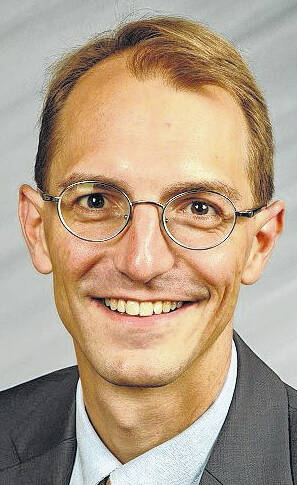“The right to an attorney, although paramount, is sometimes in conflict with the right to have a timely resolution of a case. We’re really walking a tightrope between both needs.”
— Judge Jennifer Overmyer
Preble County Probate/Juvenile Court
“Think of all the volunteer roles that they have, whether that’s on the fair board, whether that’s in your church, whether that’s serving foundations. Lawyers are sought out to serve in volunteer and pro-bono capacities because of our ability to problem solve.”
— Michelle Kranz, president
Ohio State Bar Association
When I entered the Ohio State University’s Moritz College of Law in the fall of 1996, it was at or near a high water mark for student’s entering law schools. For years, television and film had presented glowing portrayals of the practice of law. Whether it was the social ideals of Atticus Finch or Perry Mason, or the high-earning appeal of L.A. Law, the picture of legal practice was that it was a lucrative and rewarding field.
But as the 20th Century turned to the 21st, new lawyers exiting law school increasingly found that they were entering a crowded legal market, that the increase in student loans was far outpacing inflation, and that working in the public sector as a prosecutor or public defender was often insufficient to cover both those loan payments and the cost of living.
As a result, law schools began to see enrollment level off or even drop, the opening of new law schools slowed to a trickle, and college students began to focus on other careers, often in business, the medical profession, or emerging technological fields. That trend was not immediately impactful, but over the course of the past two decades, it has meant that the pool of practicing lawyers in many states — including Ohio — has gotten smaller, and the average age of lawyers has gotten older and older.
In a handful of Ohio counties, the average age of lawyers with an active law license is at or above the retirement age. Three-quarters of Ohio’s active lawyers are clustered into just seven counties, meaning that the remaining 25% are left to cover the remainder. Six-and-a-half million Ohioans live in those 81 counties. The number of newly licensed attorneys passing the bar in Ohio over the past few years is almost half of what it was when I came out of law school.
Nowhere is this impact felt more strongly than in rural communities and in the public interest law sector. When you put those two together, rural counties are finding it nearly impossible to hire or appoint a sufficient number of prosecutors, public defenders, legal aid attorneys, and guardians ad litem. Many smaller counties are forced to bring in lawyers from out of county for almost all court-appointed cases because there simply aren’t a sufficient number of lawyers in their communities. Meigs County, population 22,000, has just 10 lawyers in private practice. Only one of those lawyers takes court-appointed criminal defense cases. Preble County, population 41,000, has only 20 lawyers in private practice. They bring lawyers in from Dayton and elsewhere to meet their legal needs.
There are a number of things in the works to try to help mitigate the problem. The pandemic taught us that many pre-trial hearings can be done via video, making it easier for out-of-town lawyers to assist. The Ohio Supreme Court and Ohio Department of Higher Education will roll out a Rural Practice Incentive Program in 2024. The Ohio General Assembly has considered legislation to evaluate public defender programs and assist lawyers who are doing that work in repaying their loans. And the Ohio State Bar Association launched a Rural Practice Gap Task Force to develop solutions to the problem.
Technology can only go so far, however. The representation of criminal defendants is a Constitutional right — one that our founding fathers held dear because it had been denied to them in colonial times. And, as the quote from OSBA President Michelle Kranz at the beginning of this column notes, lawyers do far more for their communities than just legal work. They serve through volunteerism, nonprofit representation, board service and more.
The legal market will, hopefully, self-correct over time. But in the interim, it behooves those of us in rural, suburban and exurban areas to sing the praises of the quality of life in our communities, in order to continue to attract bright and energetic new lawyers to practice there.
David Hejmanowski is judge of the Probate/Juvenile Division of the Delaware County Court of Common Pleas, where he has served as magistrate, court administrator, and now judge, since 2003. He has written a weekly column on law and history for The Gazette, a sister paper of the Morrow County Sentinel, since 2005.





